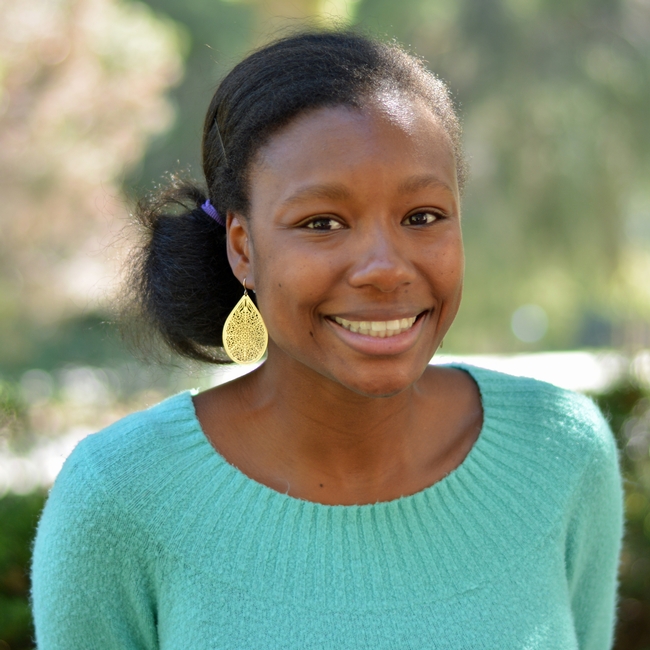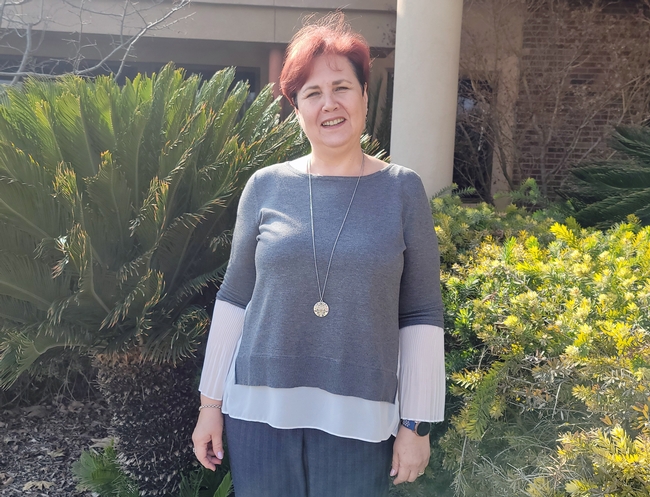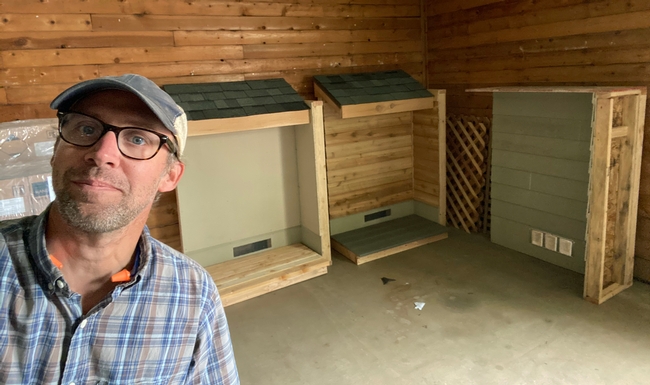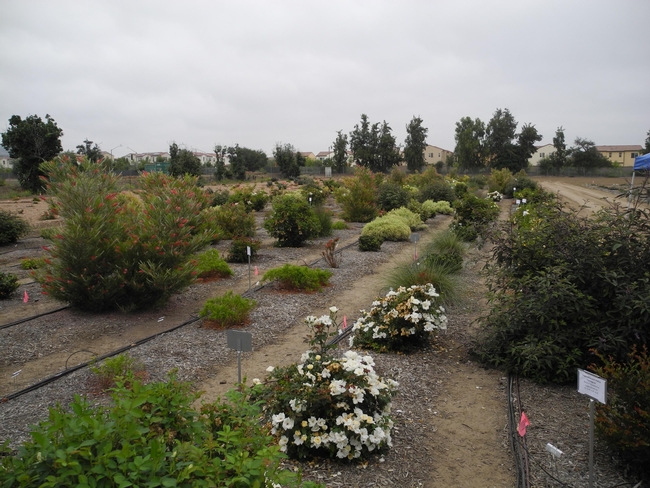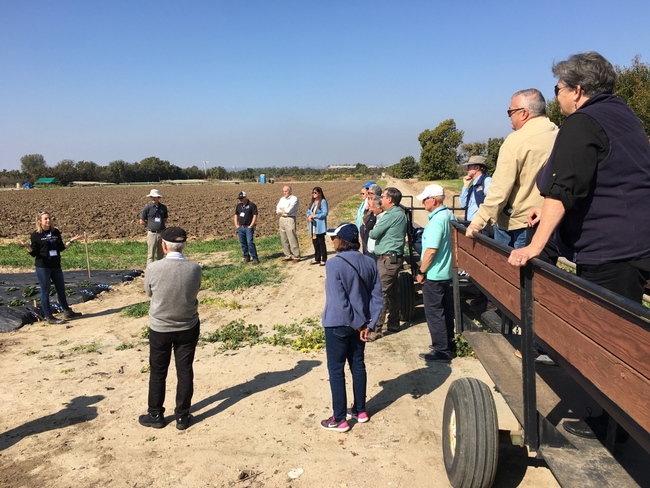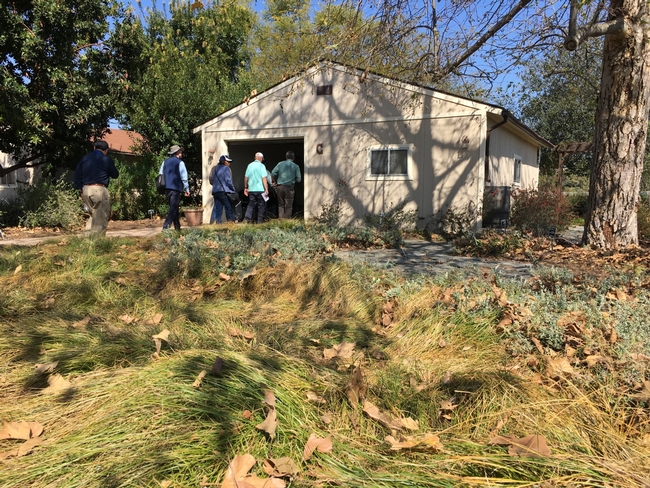- Author: Pamela Kan-Rice
Richards named ag land acquisitions academic coordinator
Chandra Mercedes Richards joined UC Cooperative Extension as agricultural land acquisitions academic coordinator II for San Diego, San Bernardino and Riverside counties on May 10.
As an agricultural lands acquisition academic coordinator II, Richards aims to better support San Bernardino, Riverside, and San Diego counties through the Sustainable Agricultural Lands Conservation (SALC) grant program.
“More specifically, I will be identifying and addressing regional barriers to land use planning, connecting producers with ANR services and climate-smart technical assistance providers, supporting grant applications and agricultural assessments, and ultimately protecting agricultural systems in perpetuity,” she said.
The East Coast native has lived in California for 11 years and is rooted in San Diego. Prior to joining UC ANR, Richards was a conservation ecologist at the greater San Diego Resource Conservation District, where she led the agriculture, forest health, and habitat restoration programs and supported climate-smart agriculture through planning, education, and technical assistance. She also was a key grant writer and project implementation leader.
She earned a Ph.D. in soil biogeochemistry from UC Berkeley and double B.S. degrees in chemistry and mathematics from Pennsylvania State University.
Richards is based in San Diego and can be reached at cmrichards@ucanr.edu.
Bayless named Master Gardener Program coordinator
Aliya Bayless has been named the UC Master Gardener Program coordinator for Tulare and Kings counties. She joined the UC Master Gardener Program in 2016 when she decided to start her own garden and, in her words, “didn't know anything about gardening.”
Bayless is originally from Baku, the capital city of Azerbaijan, located along the Caspian Sea, but has been a resident of Visalia since 2006. Although she grew up in the city, she learned to love plants (mostly house plants) from family members including her grandmother, father and aunt. When she was an adult, her dad finally bought a piece of land that he had dreamt of for many years. It was on this new property that he started his own garden with a lot of fruit trees and berries. Bayless helped him as much as she could, but like many gardeners, her main job was pulling weeds.
“Since then, I've learned a lot about gardening, met amazing people and enjoyed every minute of volunteering. I'm very excited to start my new journey as a program coordinator and hope that I will be able to help with the program and future projects,” she said.
Bayless is based in Tulare and can be reached at ambayless@ucanr.edu. – By Melissa Womack
Lewis selected to deliver ESA Founders' Memorial Lecture
Vernard Lewis, emeritus UC Cooperative Extension specialist at UC Berkeley, has been selected to deliver the Founders' Memorial Lecture at the 2021 annual meeting of the Entomological Society of America, set Oct. 31-Nov. 3 at the Colorado Convention Center in Denver.
Lewis is a national and international authority on drywood termites and is known for his pioneering research on detection innovations and nonchemical methods of control. A nationally recognized urban entomologist, Lewis's research encompasses a variety of urban pests including ants, bed bugs, cockroaches and wood-boring beetles. He has authored and co-authored more than 150 refereed and trade magazine articles and book chapters on termites and household insect pests.
The Founders' Memorial Award was established in 1958 to honor the memory of scientists who made outstanding contributions to entomology. On Nov. 2, Lewis will give a presentation on the life and legacy of African-American entomologist and civil rights advocate Margaret Collins.
To read more about Lewis' career, see https://ucanr.edu/blogs/blogcore/postdetail.cfm?postnum=24625 and to learn more about Margaret Collins see Bug Squad https://ucanr.edu/blogs/blogcore/postdetail.cfm?postnum=47649.
Tompkins recognized for fire safety
The Plumas County Fire Safe Council announced Ryan Tompkins, UC Cooperative Extension forestry and natural resource advisor, as one of two new recipients in its Fire Safe Recognition Program on May 13.
Mike Flanigan of Flanigan-Leavitt Insurance nominated Tompkins for the award for playing a significant role in improving the community's fire safety and emergency preparedness.
“Ryan Tompkins has been a huge part of the progress made with the Quincy Firewise USA initiative,” Flanigan said in his nomination letter. “He is currently the UC Cooperative Extension Forester for Plumas, Sierra, and Lassen counties where his research focuses on forest restoration and post-fire restoration. He successfully received certification in his own neighborhood – Galleppi Ranch. He is thorough and keeps the committee focused. We on the Quincy Firewise Committee are very grateful for Ryan's professional input and support.”
Tompkins started his own firewise community four years ago. “Just my little neighborhood HOA of 36 residences,” Tompkins said, “but when I joined UC ANR, I really felt that I needed to focus on making the entire town of Quincy (over 2,000 residences) a Firewise USA Site to serve all the facets of our community and we did it this May!”
“Also, last December, we helped the Sierra Brooks community outside of Loyalton become the first NFPA Firewise USA Site in Sierra County! I'm now working with Sierra City (another community in Sierra County) on their assessment. I see value in the NFPA Firewise USA site program because it focuses on empowering residents to educate, outreach, and work together as a community in wildfire preparedness. It certainly isn't a panacea, but it's a start and a good way to engage folks.”
South Coast REC honored as community service partner
Since October 2019, the Saddleback Valley Adult Transition Program and the South Coast Research and Extension Center have been developing a vocational training program for adult transition program students. As a result of this partnership, South Coast REC was recognized as Community Service Partner of the Year.
Starting on April 16, students began assisting with propagating vegetables in the South Coast REC greenhouse, harvesting, postharvest processing, maintaining vegetable crops, pruning, irrigating, and detecting and identifying insects. This unique partnership allows students to learn skills that can be applied in various settings vocationally, at home and on campus. UC Master Gardener volunteers helped them develop a more robust school garden.
“As the community starts to reopen, we look for further integration of the fruits and vegetables produced within our micro businesses for all students,” wrote Principal Raymund Bueche. “This includes the processing of produce and vegetables in the Educafe and Esperanza kitchens for student consumption and the addition of fresh items including smoothies and juices in Hope Café, a student-run coffee cart, and The Cutie Pie Café, a student-run restaurant.”
This project has also been embraced by Orange County Local Partnership Agreement, a group spearheaded by Chapman University to bring together organizations serving special needs and at-risk youth with training and on-the-job experiences as they transition from school to the workforce.
- Author: Ann Filmer
A research project initiated in the Department of Plant Sciences at UC Davis evaluates landscape plants in two-year trials under varying irrigation levels to determine the best irrigation level for optimal plant performance in regions requiring supplemental summer water. Creating water budgets is required by California's Model Water Efficient Landscape Ordinance (MWELO), and the results from these research trials help landscape professionals and home gardeners make informed decisions when specifying, selecting or promoting low water-use landscape plant material.
This year, the CDFA/USDA Specialty Crops Multistate Program funded a new Climate Ready Landscape Plants project, which will replicate the successful fields that are currently installed at UC Davis and UC ANR South Coast Research and Extension Center in Irvine.
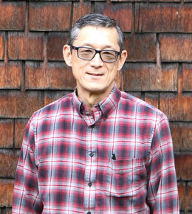
Loren Oki, UC Cooperative Extension specialist in the UC Davis Department of Plant Sciences, is the lead principal investigator and collaborators include researcher Jared Sisneroz; project leader Karrie Reid, UC Cooperative Extension environmental horticulture advisor in San Joaquin County; and Darren Haver, UC Cooperative Extension water resources and water quality advisor and director of South Coast REC and UCCE in Orange County.
Under Oki's oversight, this new $999,992 grant will support the development of additional fields at several western universities:
- University of Washington, Soo-Hyung Kim
- Oregon State University, Lloyd Nackley and Ryan Contreras
- Utah State University Center, Youping Sun and Larry Rupp
- University of Arizona, Ursula Schuch
Conducting these new experiments on landscape plants at diverse sites across the western U.S. will reveal differences in recommendations since irrigation guidelines for landscapes vary depending on climate and soil type.
The initial project was initiated as Reid's master's degree thesis research in 2004, with Oki as her major professor, and has been ongoing since then.
Project descriptions, results and images can be seen at the UC Landscape Plant Irrigation Trials website at https://ucanr.edu/sites/UCLPIT.
- Author: Pamela Kan-Rice
To gain a better understanding of UC ANR's work in communities and to see firsthand how UC's Agricultural Extension programs engage with the public in an urban setting, the UC ANR Governing Council toured the South Coast Research and Extension Center in Irvine on Feb. 19.
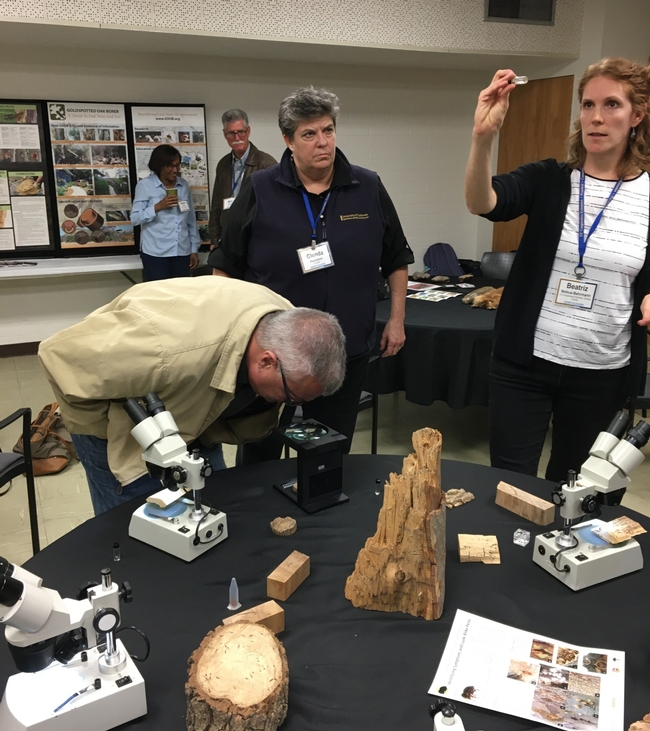
The UC ANR Governing Council, which is chaired by UC Riverside Chancellor Kim Wilcox, visited UCCE specialist Alex Putman and UC Riverside graduate student Lindsey Pedroncelli's strawberry disease study, UC IPM advisor Cheryl Wilen's herbicide demonstration, and the urban landscape demonstration site, where Darren Haver, South Coast REC director and UCCE water resources advisor, conducts water studies. Niamh Quinn, UCCE human-wildlife interaction advisor, described her research on vertebrate pests ranging from rats to coyotes, and Beatriz Nobua-Behrmann, UCCE urban forestry advisor, and John Kabashima, emeritus environmental horticulture advisor, showed the council members shot hole borers and other pests that attack trees.
The UC ANR academics were joined by public and private sector partners, including Mark Lopez from OC Produce who is also the Orange County Farm Bureau president; Bryan Thompson, owner of Pest Options; Jenna Voss, South Orange County watershed manager for Orange County Public Works; Dave Erickson, Wildland Resources Planner for Orange County Fire Authority; Jim Hartman, deputy agricultural commissioner for Los Angeles County; Laura Krueger Prelesnik, vector ecologist for the Orange County Mosquito and Vector Control District; and Rick Howard, Orange County Mosquito and Vector Control District agency manager.
Foods grown at the center were incorporated in the lunch prepared by UC ANR culinary partners Andrea Machua of Culinary Underground, Kyle Manns of Taps Brewery and Lan Pham Zenti, owner of Jadetiger Tea.
“The day was both enjoyable and informative for all,” said Kathy Eftekhari, chief of staff to the vice president.
- Author: Kat Hicklin
The South Coast Research & Extension Center is soliciting proposals for new research and extension projects, as well as prompting researchers with continuing projects to submit an updated Land, Labor, and Facilities form and 3-year report, if required, for project year July 1, 2020, through June 30, 2021.
Located on 200 acres in Orange County, South Coast REC research and extension projects and programs focus on a variety of agriculture and natural resource topics including: variety development, crop and landscape pest management, irrigation management, plant disease, rootstock development, and alternative weed control methods in managed systems. As reclaimed water is the main irrigation source provided to the center by the local water district, researchers can assist in the development of reclaimed water management strategies, an increasingly important resource for the long-term sustainability of agriculture and urban environments.
The center also continues to welcome the submission of research and extension projects addressing broader topics, such as the impacts of climate change on urban and agricultural ecosystems.
South Coast REC provides research projects with skilled farming equipment operators, irrigators, some limited indoor research facilities (for example, plant sample processing lab), and technical and management support. Projects led by UC academics receive funding directly from UC ANR and South Coast REC to reduce the actual cost of research and extension at the Center. Proposals from non-UC organizations will be considered if resources (space and labor) are available, but the full cost rate is charged plus the non-university differential (NUD currently is set at 33.7%).
Full cost recharge rates and UC ANR funding levels for UC-led research projects for South Coast REC for the 2020-21 year will be published after approval on the South Coast REC website (http://screc.ucanr.edu/Research/) this spring.
Proposals may be submitted into the REC Manage System via the South Coast REC website (http://screc.ucanr.edu/Research/Submitting_a_Proposal/) beginning March 1, 2020, and are due no later than April 15, 2020.
For questions about the research proposal process or research opportunities at South Coast REC, contact Darren Haver, center director, at dlhaver@ucanr.edu, or Chris Martinez, superintendent, at cpmartinez@ucanr.edu.

Located on 200 acres in Orange County, South Coast REC research and extension projects and programs focus on a variety of agriculture and natural resource topics, including variety development, crop and landscape pest management, repository for germplasm collections (citrus, avocado, persimmon and cherimoya), irrigation management, plant nutrition and long-term impacts of changing rainfall patterns on native ecosystems. As reclaimed water is the main irrigation source provided to the center by the local water district, researchers have the opportunity to assist in the development of management strategies for a water source that will become increasingly more important to the long-term sustainability of agriculture and urban environments.
The center provides labor, equipment, research facilities and technical and management support at a reduced recharge rate to UC academics. For example, the current recharge rate is charged on an hourly basis of $9.99. Our goal is to minimize a significant increase in this rate from year to year. Proposals from non-UC organizations will be considered if resources are available but the full cost rate will be charged. Researchers are also directly charged for irrigation costs, which are currently $1.37 per 748 gallons of water (1 CCF).
Proposals may be submitted into the REC Manage System via the South Coast REC website http://screc.ucanr.edu/Research/Submitting_a_Proposal beginning March 22, 2016, and are due April 15, 2016.
The center's Research Advisory Committee will evaluate the proposed research and extension projects for scientific merit and regional appropriateness. Researchers will be notified by email.
For help with submitting a proposal, contact Kat Hicklin, khicklin@ucanr.edu
For questions about the research proposal process/research opportunities at South Coast REC, contact Darren Haver, center director, at dlhaver@ucanr.edu or Chris Martinez, superintendent, at cpmartinez@ucanr.edu.

